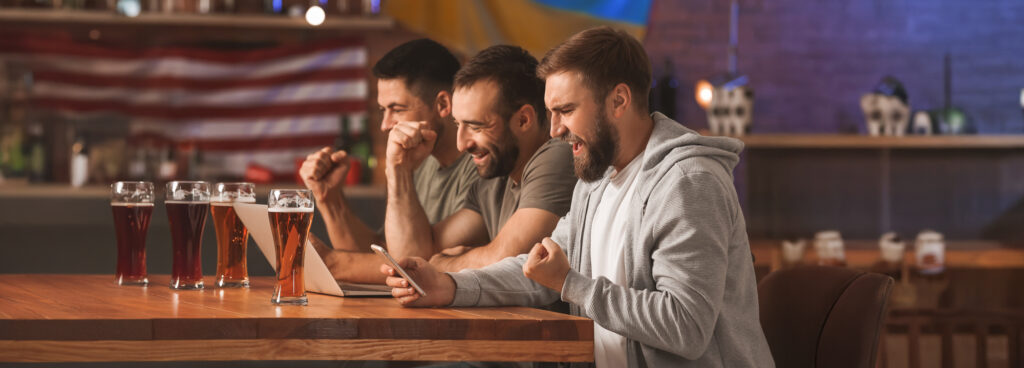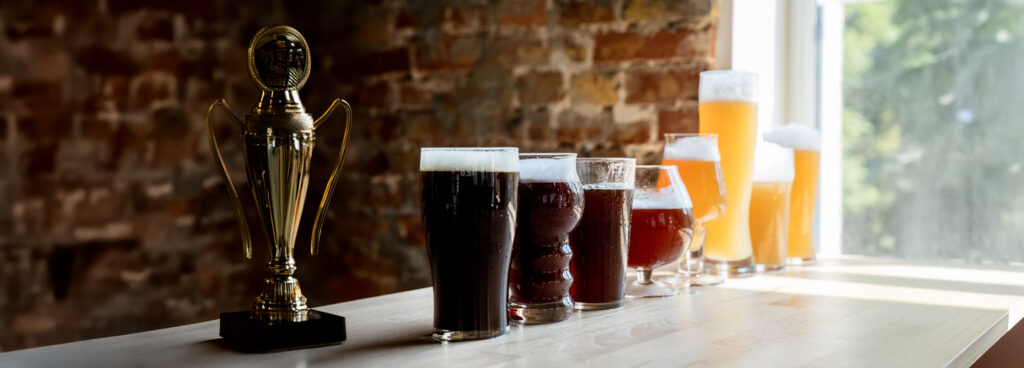Come mid-March, independent breweries gather in their hundreds for the annual Beer X conference, held annually in Liverpool. Organised by SIBA, the Society of Independent Brewers and Associates, it offers the opportunity to network, meet suppliers, attend tastings, seminars, and get away from the feeling of insularity spending too long alone in the brewhouse or sales office can often instill.

In addition to this, Beer X also hosts two annual competitions. The first is SIBAs annual business awards, where breweries can vye against each other in categories such as best marketing implementation, and best overall business. It’s a valuable competition in terms of recognition within the beer industry itself, but the awards that take place the following evening have a potentially greater impact, because it’s the beer itself that’s being judged.
SIBAs Beer Awards feel like a healthy, genuine reflection of the best independently produced beer being made in the UK—or at least that which is produced by its members. Currently less than half of the UK’s 1700-ish breweries count themselves among SIBAs ranks. Although it looks likely competition will be stiffer in 2026 and beyond, as non-members (who are still classed as independent under SIBAs own definition) will be able to enter the competition for a fee.
Like most beer competitions, it’s largely judged by volunteers, albeit many of whom have significant experience, with some also carrying beer qualifications from courses run by organisations like Cicerone or the Wine and Spirit Education Trust (WSET). Initially taking place as regional heats, by the time Beer X comes around the winners of these find themselves entered into the national competition. Conference attendees can try these already-award-winning beers for themselves at the impressive bar at the centre of the convention hall. On tasting, it’s often pretty obvious which beers are going to take home a prize, but there can be the odd curveball on occasion too, as different judges will have their own preferences. Overall, the quality is immensely high, which showcases the wealth and depth of independently produced beer we’re lucky to have here in the UK.
Once golds, silvers and bronzes are distributed, and the overall category winners have been announced, recipients are rightly quick to channel this news into the beer press, and onto social media accounts. Take it from me, it’s a great feeling winning an award for your hard work, but often after a few days it’s back to business as usual. Medals and trophies are soon consigned to gather dust on brewery office shelves, and the victory eventually becomes a memory, as brewers look towards the next competition, and the one after that, and so on. This isn’t to take anything away from awards success, it’s just the inevitable nature of the awards cycle.

When talking about awards it’s worth considering what this actually means to your customers; the person standing at the bar, or in the supermarket aisle. They pick up a bottle/can or stare at a pump clip. They stare at the stars and medals that adorn the branding. But do they, in that instance, think “this has won an award” and have it subsequently influence their purchasing decision? Or do they just look for something safe, or something familiar? While receiving awards rightfully feels good and is something that has some inherent value, I’m cynical about how that value translates to the purchasing decisions of beer drinkers.
Beer competitions come in various shapes and sizes. Those run by SIBA, and indeed the Campaign for Real Ale (CAMRA) are free to enter and are volunteer-led in terms of judging. Similarly, in the USA, the Brewers Association runs national awards each year at the Great American Beer Festival, plus the formerly bi-annual (now annual) World Beer Cup, held at the Craft Brewers Conference. The latter allows brewers to enter from all over the world and is considered by some to be one of, if not the most prestigious beer competition on the planet. Judges at this competition are required to have credentials and have to be invited, and the rules around judging are incredibly strict. You can’t wear perfume or deodorant, you can’t drink coffee or smoke before you begin. It’s hardcore. Despite fierce competition from their US counterparts, British breweries have seen remarkable success here over the past few years. Winners include Leeds’ Northern Monk, the recently shuttered Lovibonds brewery in Henley-on-Thames to name a few.
While SIBA and CAMRA competitions cost very little to enter, the former requiring membership and the latter costing as much as posting your beer samples, the World Beer Cup charges a staggering $185 per entry, up to a maximum of 10 entries. Other examples such as the World Beer Awards, International Beer Challenge and several others also require entrants to cough up a fee per entry in the region of £150-£250 per beer. Remarkably, despite the outlay for breweries, many of these competitions held in the UK still invite judges on a voluntary basis much like a CAMRA or SIBA competition, although generally these volunteers are highly experienced and have one, if not several qualifications in judging beer. (It’s worth noting that these courses are also relatively costly to enroll upon, which is worth dwelling on when you consider that the work it can get you typically remains unpaid.)
Like with the SIBA and CAMRA competitions, victorious breweries in pay-to-play competitions celebrate their wins vociferously. Although the nature of the competition often means that you don’t know who they’re competing against, and many breweries—in particular smaller independents—simply won’t enter due to the prohibitive cost of doing so. For me, this further confounds the idea that these competitions have value beyond the elation they bring the recipients of the awards themselves. Does, say, the World Beer Awards have more value than the Brussels Beer Challenge? How does an awards win translate into sales? To the person actually paying for and drinking the beer, I’d argue that neither really matter.

Things change, however, when it comes to how that beer got into said consumers hand in the first place. In addition to the aforementioned awards that focus on beer specifically, there are other competitions that include beer, but aren’t directly related to it. A good example of this would be the Great Taste Awards, which judges a huge range of foodstuffs from coffee to chocolate and beer. These awards are tiered into one, two and three star denominations, with three stars being the most difficult rank to attain. It’s an effective system because for the most part it’s looking at what’s good rather than what’s best. The likelihood is that if you enter, and you make something that’s decent then you’re in with a chance of getting one star. But if you make something really special, then you could be in with a chance of bagging an elusive two or three star rating.
In terms of beer, these ratings still might not mean all that much to consumers. When it comes to retail buyers looking for the next big thing, however, suddenly things look quite different. If you’re working in purchasing for a large supermarket chain or a group of pubs, then you’re going to be inundated with products and pitches from brands desperate for a listing. Awards like Great Taste are a pretty definitive barometer that something is going to be decent – or in a handful of cases, exceptional.
My opinion remains that beer awards have a lot more value to the people that make beer rather than for the people who drink it. In fact I would say their real value of awards to the majority of drinkers is somewhere close to zero. What we don’t see is how these awards can potentially influence people in the middle of the chain, and potentially help decide what ends up on shelves and taps around the country. But this line of thinking forgets one important detail: that for many brewers it’s also an important bit of fun. And in an industry fraught with challenges that aren’t going anywhere fast, seeing a group of smiling, celebrating brewers with a clutch of fresh awards at Beer X feels like something worth holding on to.
— Matthew Curtis